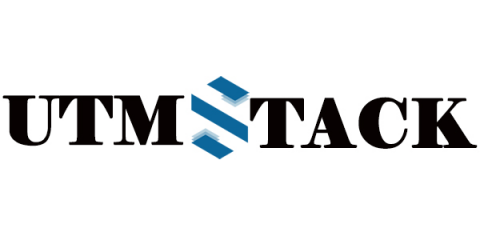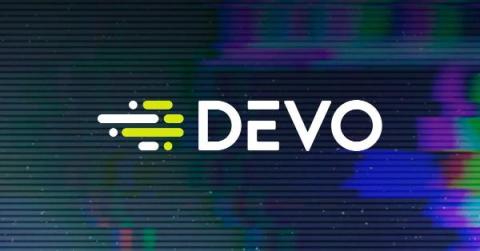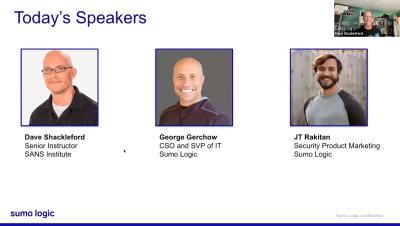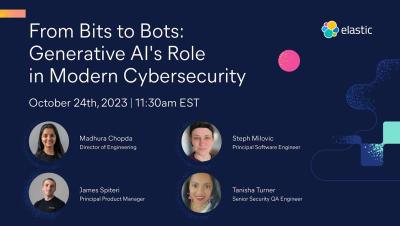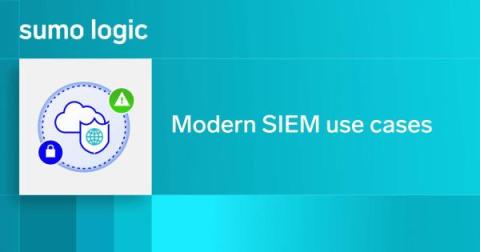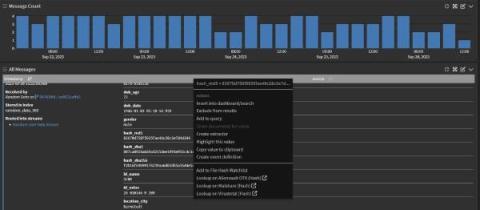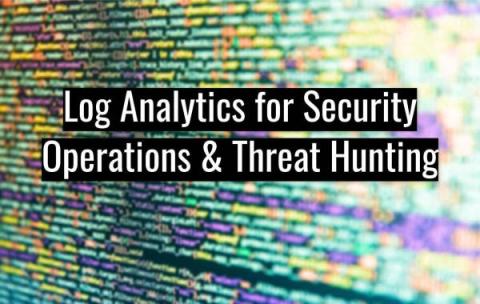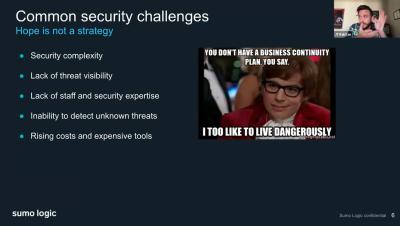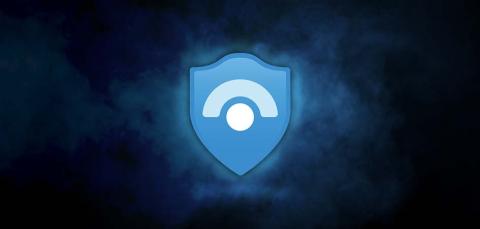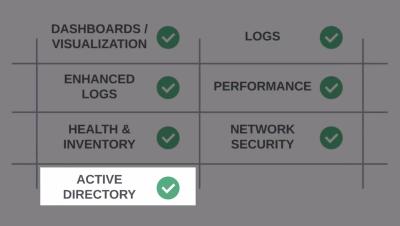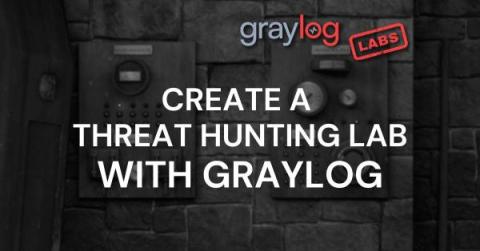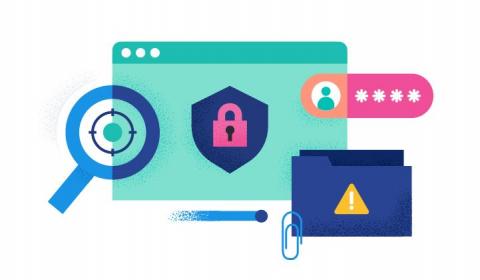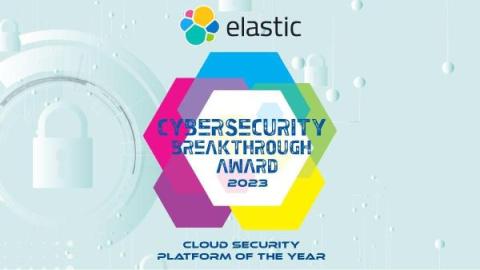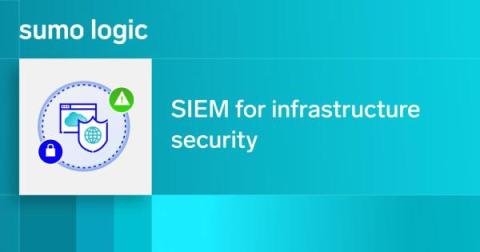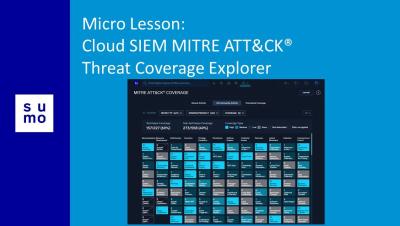Security | Threat Detection | Cyberattacks | DevSecOps | Compliance
October 2023
How to Create SIEM Correlation Rules
SIEM (Security Information and Event Management) systems play a crucial role in modern cybersecurity frameworks. They collate log and event data from an array of sources within an organization’s network, facilitating real-time analysis and long-term storage of this crucial information to uphold security standards. A core component of SIEM’s effectiveness lies in its correlation rules, which are designed to detect specific patterns or anomalies that might indicate a security issue.
Three Steps to Reduce False Positives and Alert Fatigue in Your SIEM
In the realm of cybersecurity, Security Information and Event Management (SIEM) systems are indispensable tools for monitoring and analyzing an organization’s security posture in real-time. However, one of the hurdles that security professionals often encounter is the prevalence of false positives which can overwhelm analysts and obscure genuine threats.
Keeping Perspective Amongst the Sometimes Tumultuous Cybersecurity Environment
A SOC analyst role is equal parts fulfilling and overwhelming. On one hand, the landscape is dynamic and the work is critical to protecting organizations. On the other, the weight of continual responsibility can lead to stress, anxiety, and cybersecurity burnout. Understanding the importance of your mental health is crucial to maintaining productivity and preventing cybersecurity burnout.
This Month in Datadog: Heatmaps Updates, API Catalog, Content Packs for Cloud SIEM, and more
Is retail a security fail? Make sure your PoS is not a POS
UTMStack Unveils Commercial License for its Correlation Engine and SDK: A Boon for Organizations Developing SIEM or XDR Solutions
In a significant move to empower organizations in bolstering their security infrastructure, UTMstack has announced the commercialization of its Correlation Engine and Software Development Kit (SDK) under a commercial license. This strategic initiative paves the way for organizations aiming to develop their own Security Information and Event Management (SIEM) or Extended Detection and Response (XDR) solutions by leveraging the state-of-the-art features embedded in the UTMstack’s platform.
How to Spot a Next-Gen SIEM Imposter
Staying ahead of the cybersecurity curve can feel like running a marathon uphill, and the right SIEM is key to leveling the playing field. Smarter SIEM solutions have emerged from the cloud to address the changing demands of today’s security operations. Unlike legacy SIEMs, which were designed for on-premises deployments and have limited scalability, more innovative next-gen solutions offer cloud-native SaaS models that provide greater flexibility and scalability.
How the MITRE ATT&CK Framework Helps CISOs Communicate Risk to Stakeholders
Picture this: Your CEO comes into your office and asks, “What’s our security posture, and where’s our greatest area of risk? I’m particularly worried about this new emerging threat group. What defenses or detections do we have around that?” You: “…” Enter the MITRE ATT&CK® framework and Devo’s MITRE ATT&CK Adviser app—built to help you tell the business where your risks are and what it would take to address them.
Does Your SIEM Empower Your SOC?
The right SIEM can make or break your SOC. While there are a lot of security solutions and platforms for you to choose from, ask yourself–how will they make life in your SOC better than before? If you make the right choice, you’ll empower your SOC to work more efficiently, more effectively, and more proactively. As you do your research and consider which SIEM is right for you, make sure it checks these boxes. Your analysts will thank you.
From Bits to Bots: Generative AI's Role in Modern Cybersecurity
Ten modern SIEM use cases
Top Challenges in Implementing SIEM Solutions
Security Information and Event Management (SIEM) systems are the modern guardian angels of cybersecurity, offering robust threat detection, efficient incident response, and compliance tranquility. However, beneath the surface of these promising advantages lie intricate challenges. In this blog post, we delve deep into SIEM implementation challenges. But before diving in, let's first understand what SIEM entails.
A CISO's perspective: Why I've read the Elastic Global Threat Report
Top Five Free and Open Source SIEM
In an age where cybersecurity is paramount, organizations must be vigilant in protecting their digital assets and sensitive information. Security Information and Event Management (SIEM) solutions are crucial in this endeavor, as they provide comprehensive visibility into an organization’s cybersecurity posture. While there are many commercial SIEM tools on the market, the pursuit of truly free and open-source SIEM solutions is gaining traction.
Build a 24/7 Security Operations Center (SOC) with Free and Open Source Technologies
Welcome to our comprehensive guide on building a 24/7 Security Operations Center (SOC) using free and open-source technologies. In the digital age, protecting your organization’s information assets has never been more important. Cyber threats are constantly evolving, and organizations of all sizes and industries are vulnerable to attacks.
Using VirusTotal to detect Malware
Demystifying the Role of a Cybersecurity Researcher
If your idea of a dream job is hunting for vulnerabilities and staying current on emerging cyberthreats, then the role of a cybersecurity researcher could be your ideal match. These investigative specialists dedicate their hours to unearthing security issues and concocting protective countermeasures. If you’re interested in learning more about what this role entails, here’s a breakdown.
SIEM Logging for Enterprise Security Operations and Threat Hunting
The Biggest Takeaways From SOC Analyst Appreciation Day 2023
SOC Analyst Appreciation (SAAD) Day 2023 has come and gone. With great speakers and great sessions, it was a can’t-miss event for SOC analysts and anyone else looking to better appreciate their SOCs and see what’s on the horizon for cybersecurity. But hey, we realize that despite your best efforts, some SOC teams and leaders couldn’t make it the day of.
Indigov's security team uses Datadog Cloud SIEM & Log Management to reduce mean time to respond
Elastic Global Threat Report 2023: Top cybersecurity forecasts and recommendations
Evaluating Your SIEM: 4 Ways Your Legacy On-Prem Solution Might Be Cramping Your Style
As a CISO or security leader, you juggle many responsibilities—crafting a cybersecurity strategy, managing the security budget, and overseeing your organization’s information systems. But can you remember the last time you took a moment to step back and prioritize evaluating your SIEM? Like your favorite pair of jeans from 15 years ago, your trusty on-prem SIEM likely isn’t fitting as well as it used to. Here are four ways your legacy solution is holding you back.
Sumo Logic Customer Brown Bag - Security - General 101 & App Catalog - October 17th, 2023
Trustwave Launches Managed SIEM for Microsoft Sentinel
Trustwave has introduced a new solution allowing organizations using Microsoft Sentinel to obtain the highest return on investment possible while keeping their security level at peak performance and improving response times. Trustwave Managed SIEM for Microsoft Sentinel is a managed solution intended to maximize an organization’s Microsoft E5 investment, specifically firms without a robust cybersecurity team.
Get your head in the clouds
Can You Use the ELK Stack as a SIEM? A Fresh Take
What's SIEM? Security Information & Event Management Explained
How to Get a Job in Cybersecurity by Leveraging LinkedIn
Landing a SOC job and breaking into the cybersecurity space can feel daunting. One way to set yourself up for success is to leverage professional social networking sites like LinkedIn. When used correctly, LinkedIn can be a powerful tool for growing your connections and landing your dream gig. Not sure how to get a job in cybersecurity by using LinkedIn? Here are some tips.
How to Build Your Cybersecurity Leadership Skills as a SOC Analyst
Leadership skills are important for career growth in any industry, and cybersecurity is no exception. While you can certainly have a long, fulfilling career as a SOC analyst, you may be interested in moving up the ranks into a leadership position one day. Whether you aspire to be a SOC director or even a CISO, these tips will help you position yourself and develop the skills needed to move into a cybersecurity leadership role.



